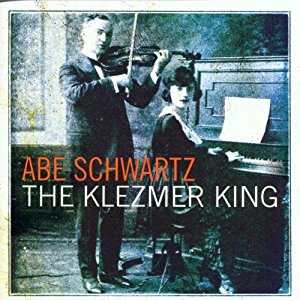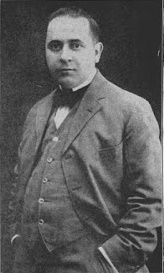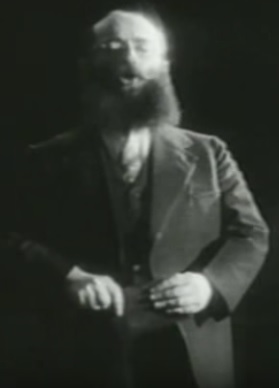 | It was inevitable. Given that we had been transcribing 33 and 45 vinyl to digital, the last piece of the puzzle - dealing with 78's - would be next. We received a set of 78's to look at and convert to digital. Let's look at a history of the 78 rpm phonograph record. It is said that this ultimately was the creation of one company, The Columbia Graphaphone Company, but like every other invention there were many steps to its creation. The forerunner of Columbia was the Voltaphone graphaphone company which created the graphaphone, two later models of which are left and right. In an attempt to evade Edison's patents on recorded voice as he was the originator of the idea, Volta rearranged the way that the needle moved across the platter in addition to using a wax to record the content. Volta was one of several graphaphone companies that slowly consolidated and it is noted that Jerome Lippincott, of Rochester NY, did quite a bit to effect this consolidation using his inherited wealth until he went broke around 1890. In a similar way record speeds were all over the place although it seemed from this experience that the faster the rotation, the better the sound. Slowly everyone consolidated around 78 RPM and nothing we have found indicates anything but serendipity in the selection of this speed. Note: even this speed was not necessarily uniform around this country in the early days of electric service in this country as electricty cycles per second could be 50 cycles per second in parts of the country and 60 cycles per second in other parts. Graphaphones, the devices to read these records, really ran these 78s at 77 rpm when operating at 50 cycles per second.
Columbia Graphaphone reportedly reorganized late in the 1930's, scrapped its name, and become Columbia Records. Supposedly this had something to do with the creation of the CBS radio network but we need to do more research on this.
Theoretically, this should mean that any record with the Graphaphone label was created before or in 1939, the reported year of the change. However, research indicates 1940 as the year of at least one of these records creation under the Graphaphone label. Either the sources on the internet are wrong or any goods in stock were still allowed to be sold even after the name change.
We start with five records as indicated below with an additional bonus. To hear the music, click on the red links. Click on the same link to end the music or click another selection. Click to picture to see the picture as it is stored on this website. |  |


 The artist of record in this platter is the Yiddisher Orchestra. In the
The artist of record in this platter is the Yiddisher Orchestra. In the  This record again was created sometime before 1940. In fact, given that the singer is Joseph Feldman (we believe the attached photo is of this singer), this would date this to the 1910's and 20's. In the US (and for most of the world), Yiddish would have been the language for Jewish populations. What can we make out of the titles of these songs? Hoinig Shabas is probably the yiddish for Oneg Shabbat, one would think. But we can't find a translation for Mein Wabel Mirke.
This record again was created sometime before 1940. In fact, given that the singer is Joseph Feldman (we believe the attached photo is of this singer), this would date this to the 1910's and 20's. In the US (and for most of the world), Yiddish would have been the language for Jewish populations. What can we make out of the titles of these songs? Hoinig Shabas is probably the yiddish for Oneg Shabbat, one would think. But we can't find a translation for Mein Wabel Mirke. This platter has two entries, Zorea Tzedokos and Zaroh Chayu, both sung by the cantor Josef Rosenblatt whose picture (as he appeared in the Jazz Singer) is included here. The Columbia index number is E3278. Research on the internet indicates that the disk was created in 1917. Since the labels are in better shape this picture should provide more information than several of the record labels above.
This platter has two entries, Zorea Tzedokos and Zaroh Chayu, both sung by the cantor Josef Rosenblatt whose picture (as he appeared in the Jazz Singer) is included here. The Columbia index number is E3278. Research on the internet indicates that the disk was created in 1917. Since the labels are in better shape this picture should provide more information than several of the record labels above.
 We end with something definitely not danceable, in fact the music is a vehicle for a set of jokes from a comic icon that was part of the collection of 78's given to us. This record is on a Columbia recording label. We would date this as recorded live before an audience in the 1950's given a reference to television. To give you warning, this record really doesn't belong with the question of dancing of any kind, but then again there are many things on this web site which seem to be out of place.
We end with something definitely not danceable, in fact the music is a vehicle for a set of jokes from a comic icon that was part of the collection of 78's given to us. This record is on a Columbia recording label. We would date this as recorded live before an audience in the 1950's given a reference to television. To give you warning, this record really doesn't belong with the question of dancing of any kind, but then again there are many things on this web site which seem to be out of place.